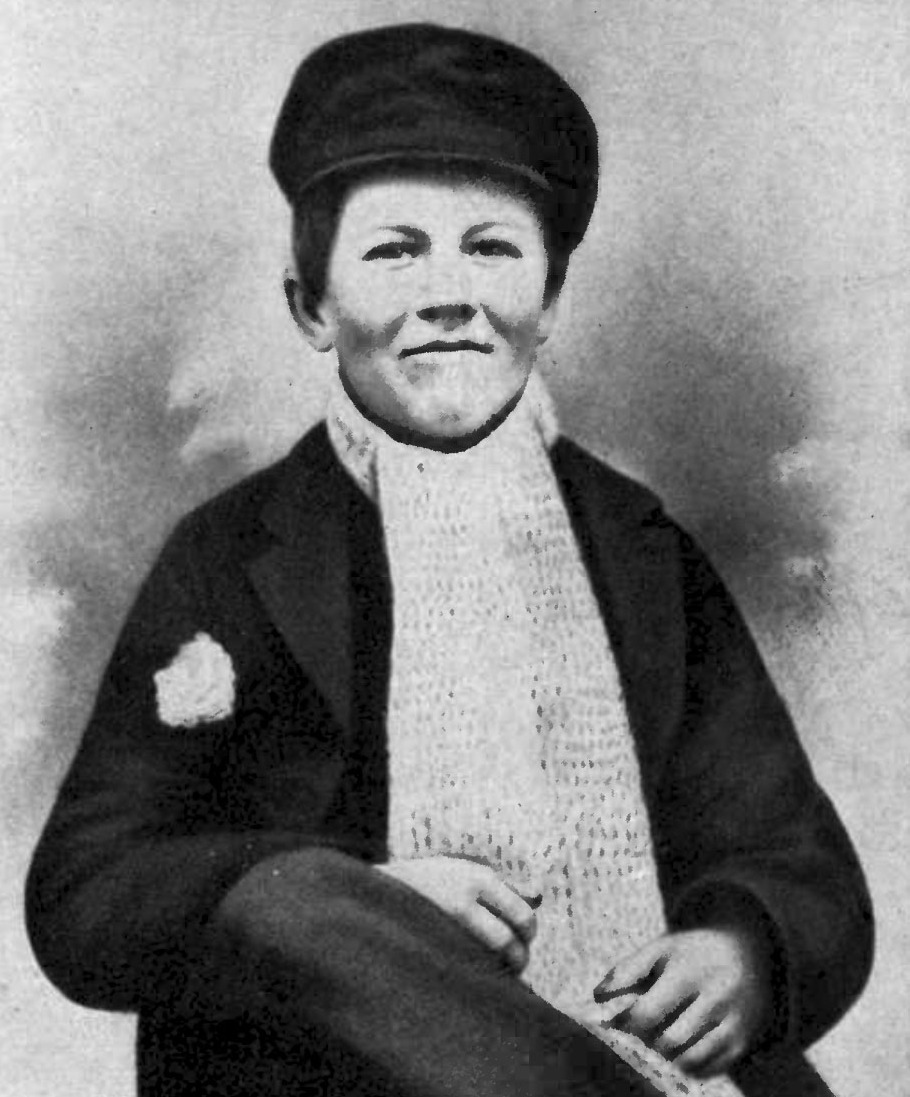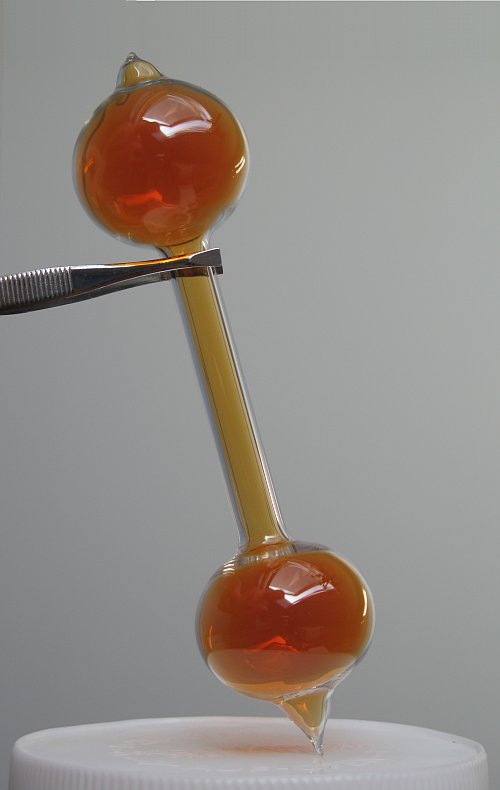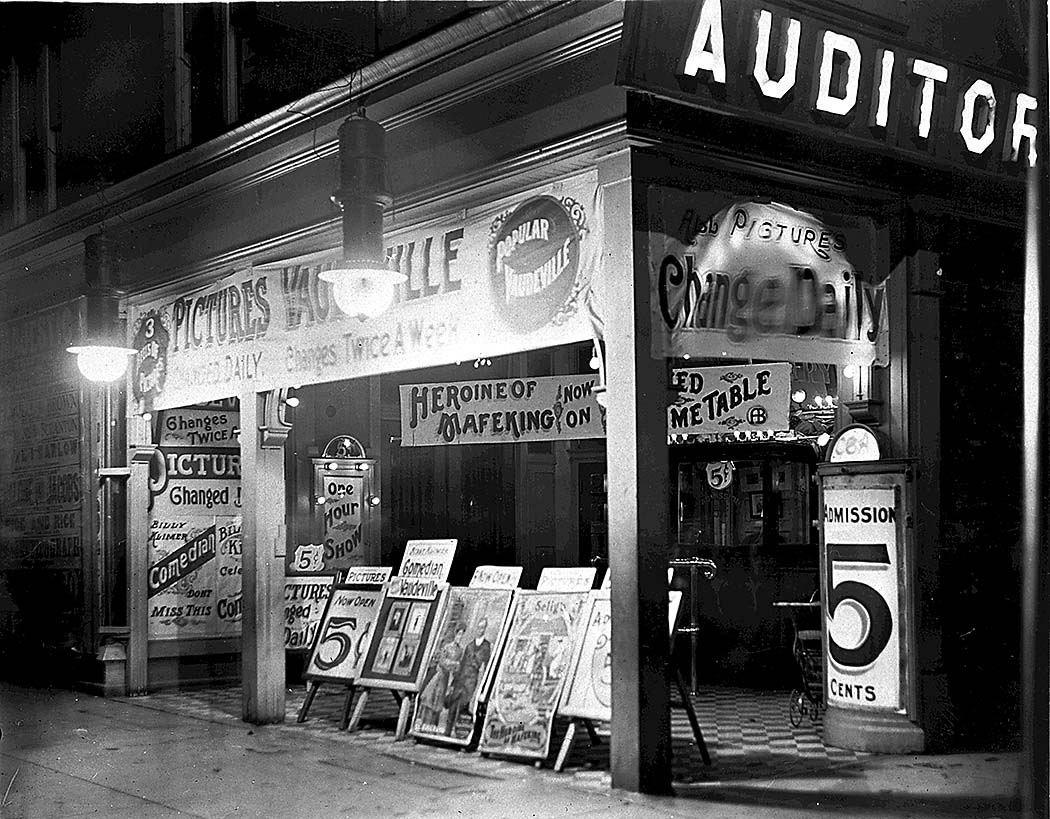|
Phonograph Cylinder
Phonograph cylinders (also referred to as Edison cylinders after its creator Thomas Edison) are the earliest commercial medium for Sound recording and reproduction, recording and reproducing sound. Commonly known simply as "records" in their heyday (c. 1896–1916), a name which has been passed on to Phonograph record, their disc-shaped successor, these hollow cylinder, cylindrical objects have an audio recording engraved on the outside surface which can be reproduced when they are played on a mechanical cylinder phonograph. The first cylinders were wrapped with tin foil but the improved version made of wax was created a decade later, after which they were commercialized. In the 1910s, the competing disc record system Format war, triumphed in the marketplace to become the dominant commercial audio medium. Early development In December 1877, Thomas Edison and his team invented the phonograph using a thin sheet of tin foil wrapped around a hand-cranked, grooved metal cylinder. Tin f ... [...More Info...] [...Related Items...] OR: [Wikipedia] [Google] [Baidu] |
Thomas Edison
Thomas Alva Edison (February11, 1847October18, 1931) was an American inventor and businessman. He developed many devices in fields such as electric power generation, mass communication, sound recording, and motion pictures. These inventions, which include the phonograph, the motion picture camera, and early versions of the electric Incandescent light bulb, light bulb, have had a widespread impact on the modern industrial society, industrialized world. He was one of the first inventors to apply the principles of organized science and teamwork to the process of invention, working with many researchers and employees. He established the first industrial research laboratory. Edison was raised in the American Midwest. Early in his career he worked as a telegraph operator, which inspired some of his earliest inventions. In 1876, he established his first laboratory facility in Menlo Park, New Jersey, where many of his early inventions were developed. He later established a botanical ... [...More Info...] [...Related Items...] OR: [Wikipedia] [Google] [Baidu] |
Dictaphone
Dictaphone was an American company founded by Alexander Graham Bell that produced dictation machines. It is now a division of Nuance Communications, based in Burlington, Massachusetts. Although the name "Dictaphone" is a trademark, it has become genericized as a means to refer to any dictation machine. History The Volta Laboratory was established by Alexander Graham Bell in Washington, D.C. in 1881. When the Laboratory's sound-recording inventions were sufficiently developed with the assistance of Charles Sumner Tainter and others, Bell and his associates set up the Volta Graphophone Company, which later merged with the American Graphophone Company (founded in 1887) which itself later evolved into Columbia Records (founded as the Columbia Phonograph Company in 1889). The name "Dictaphone" was trademarked in 1907 by the Columbia Graphophone Company, which soon became the leading manufacturer of such devices. This perpetuated the use for voice recording of wax cyli ... [...More Info...] [...Related Items...] OR: [Wikipedia] [Google] [Baidu] |
Vapor
In physics, a vapor (American English) or vapour (Commonwealth English; American and British English spelling differences#-our, -or, see spelling differences) is a substance in the gas phase at a temperature lower than its critical temperature,R. H. Petrucci, W. S. Harwood, and F. G. Herring, ''General Chemistry'', Prentice-Hall, 8th ed. 2002, p. 483–86. which means that the vapor can be condensation, condensed to a liquid by increasing the pressure on it without reducing the temperature of the vapor. A vapor is different from an aerosol. An aerosol is a suspension of tiny particles of liquid, solid, or both within a gas. For example, water has a critical temperature of , which is the highest temperature at which liquid water can exist at any pressure. In the Earth's atmosphere, atmosphere at ordinary temperatures gaseous water (known as water vapor) will condense into a liquid if its partial pressure is increased sufficiently. A vapor may co-exist with a liquid (or a solid). ... [...More Info...] [...Related Items...] OR: [Wikipedia] [Google] [Baidu] |
Gold
Gold is a chemical element; it has chemical symbol Au (from Latin ) and atomic number 79. In its pure form, it is a brightness, bright, slightly orange-yellow, dense, soft, malleable, and ductile metal. Chemically, gold is a transition metal, a group 11 element, and one of the noble metals. It is one of the least reactivity (chemistry), reactive chemical elements, being the second-lowest in the reactivity series. It is solid under standard temperature and pressure, standard conditions. Gold often occurs in free elemental (native state (metallurgy), native state), as gold nugget, nuggets or grains, in rock (geology), rocks, vein (geology), veins, and alluvial deposits. It occurs in a solid solution series with the native element silver (as in electrum), naturally alloyed with other metals like copper and palladium, and mineral inclusions such as within pyrite. Less commonly, it occurs in minerals as gold compounds, often with tellurium (gold tellurides). Gold is resistant to ... [...More Info...] [...Related Items...] OR: [Wikipedia] [Google] [Baidu] |
Molding (process)
Molding (American English) or moulding ( British and Commonwealth English; see spelling differences) is the process of manufacturing by shaping liquid or pliable raw material using a rigid frame called a mold or matrix. This itself may have been made using a pattern or model of the final object. A mold or mould is a hollowed-out block that is filled with a liquid or pliable material such as plastic, glass, metal, or ceramic raw material. The liquid hardens or sets inside the mold, adopting its shape. A mold is a counterpart to a cast. The very common bi-valve molding process uses two molds, one for each half of the object. Articulated molds have multiple pieces that come together to form the complete mold, and then disassemble to release the finished casting; they are expensive, but necessary when the casting shape has complex overhangs. Piece-molding uses a number of different molds, each creating a section of a complicated object. This is generally only used for larg ... [...More Info...] [...Related Items...] OR: [Wikipedia] [Google] [Baidu] |
Columbia Phonograph
Columbia Records is an American record label owned by Sony Music Entertainment, a subsidiary of Sony Music Group, an American division of multinational conglomerate Sony, Sony. Founded in 1889, Columbia is the oldest surviving brand name in the recorded sound business, and the second major company to produce records. It is one of Sony Music's four flagship record labels, along with Epic Records, RCA Records and Arista Records. History Beginnings (1888–1929) The Columbia Phonograph Company was founded on January 15, 1889, by stenographer, lawyer, and New Jersey native Edward D. Easton (1856–1915) and a group of investors. It derived its name from the District of Columbia, where it was headquartered. At first it had a local monopoly on sales and service of Edison p ... [...More Info...] [...Related Items...] OR: [Wikipedia] [Google] [Baidu] |
Edison Records
Edison Records was one of the early record labels that pioneered sound recording and reproduction, and was an important and successful company in the early recording industry. The first phonograph cylinders were manufactured in 1888, followed by Edison's foundation of the Edison Phonograph Company in the same year. The recorded wax cylinders, later replaced by Blue Amberol cylinders, and vertical-cut Diamond Discs, were manufactured by Edison's Thomas A. Edison, Inc., National Phonograph Company from 1896 on, reorganized as Thomas A. Edison, Inc. in 1911. Until 1910 the recordings did not carry the names of the artists. The company began to lag behind its rivals in the 1920s, both technically and in the popularity of its artists, and halted production of recordings in 1929. Before commercial mass-produced records Thomas A. Edison invented the phonograph, the first device for recording and playing back sound, in 1877. After patenting the invention and benefiting from the publici ... [...More Info...] [...Related Items...] OR: [Wikipedia] [Google] [Baidu] |
Phonograph Record
A phonograph record (also known as a gramophone record, especially in British English) or a vinyl record (for later varieties only) is an analog sound storage medium in the form of a flat disc with an inscribed, modulated spiral groove. The groove usually starts near the outside edge and ends near the center of the disc. The stored sound information is made audible by playing the record on a phonograph (or "gramophone", "turntable", or "record player"). Records have been produced in different formats with playing times ranging from a few minutes to around 30 minutes per side. For about half a century, the discs were commonly made from shellac and these records typically ran at a rotational speed of 78 rpm, giving it the nickname "78s" ("seventy-eights"). After the 1940s, "vinyl" records made from polyvinyl chloride (PVC) became standard replacing the old 78s and remain so to this day; they have since been produced in various sizes and speeds, most commonly 7-inch discs pla ... [...More Info...] [...Related Items...] OR: [Wikipedia] [Google] [Baidu] |
Library Of Congress
The Library of Congress (LOC) is a research library in Washington, D.C., serving as the library and research service for the United States Congress and the ''de facto'' national library of the United States. It also administers Copyright law of the United States, copyright law through the United States Copyright Office, and it houses the Congressional Research Service. Founded in 1800, the Library of Congress is the oldest Cultural policy of the United States, federal cultural institution in the United States. It is housed in three buildings on Capitol Hill, adjacent to the United States Capitol, along with the National Audio-Visual Conservation Center in Culpeper, Virginia, and additional storage facilities at Fort Meade, Fort George G. Meade and Cabin Branch in Hyattsville, Maryland. The library's functions are overseen by the librarian of Congress, and its buildings are maintained by the architect of the Capitol. The LOC is one of the List of largest libraries, largest libra ... [...More Info...] [...Related Items...] OR: [Wikipedia] [Google] [Baidu] |
Jukebox
A jukebox is a partially automated music-playing device, usually a coin-operated machine, that plays a user-selected song from a self-contained media library. Traditional jukeboxes contain records, compact discs, or digital files, and allow users to select songs through mechanical buttons, a touch screen, or keypads. They were most commonly found in diners, bars, and entertainment venues throughout the 20th century. The modern concept of the jukebox evolved from earlier automatic phonographs of the late 19th century. The first coin-operated phonograph was introduced by Louis Glass and William S. Arnold in 1889 at the Palais Royale Saloon in San Francisco. The term "jukebox" itself is believed to derive from the Gullah word "juke" or "joog", meaning disorderly or rowdy, referring to juke joints where music and dancing were common. Jukeboxes became especially popular from the 1940s to the 1960s, with models produced by companies such as Wurlitzer, Seeburg, Rock-Ola, and AMI. In t ... [...More Info...] [...Related Items...] OR: [Wikipedia] [Google] [Baidu] |
Nickelodeon (movie Theater)
The nickelodeon was the first type of indoor exhibition space dedicated to showing projected film, motion pictures in the United States and Canada. Usually set up in converted storefronts, these small, simple theaters charged five cents for admission (a "nickel", hence the name) and flourished from about 1905 to 1915. American cable station Nickelodeon was named after the theater. Etymology "Nickelodeon" was concocted from ''Nickel (United States coin), nickel'', the name of the U.S. five-cent coin, and the ancient Greek word Odeon (building), ''odeion'', a roofed-over theater, the latter indirectly by way of the ''Odéon-Théâtre de l'Europe, Odéon'' in Paris, emblematic of a very large and luxurious theater, much as the ''Hôtel Ritz Paris, Ritz'' was of a grand hotel. History The earliest films had been shown in Kinetoscope, "peep show" machines or projected in vaudeville theaters as one of the otherwise live acts. Nickelodeons drastically altered film exhibition practic ... [...More Info...] [...Related Items...] OR: [Wikipedia] [Google] [Baidu] |









